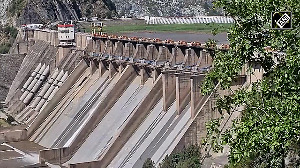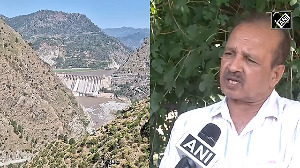In the first millennium, India was called the Sone Ki Chidiya (Golden Bird) because it was such an attractive market.
Today, in 2007, McKinsey has released a report on the Indian consumer market titled 'The Bird of Gold' that finds the emergence of the new middle class. India will become the fifth largest consumer market in the world and incomes will triple, and all this will happen in less than 20 years.
McKinsey Managing Director Adil Zainulbhai, and Partner, McKinsey India Subbu Narayanswamy explain the key findings of this report.
Excerpts from an interview given to CNBC-TV18:
Almost everyone is bullish about the India growth story and is placing their bets on the Indian middle class. What is the basis of your optimism? And in that sense, how different is your report?
Zainulbhai: Two things; first of all we have taken a 20-year look and over a 20-year timeframe even small differences can magnify, so we thought it would be worthwhile to take a 20-year look as very few people have done that.
The second thing is, we actually think we have a very balanced view. I don't think it is either optimistic or pessimistic. For example, we have assumed an averge growth rate over 20 years of 7.3%; some people will say that given that the economy has grown at 9% over the last year, this is too conservative.
On the other hand, some people would say that very few economies have had a sustained growth rate of 7.3% over 20 years. So, I don't think we are being optimistic, I think we are trying to be reasonably real and not too pessimistic or optimistic.
Your report says that India's income will triple in two decades. We are growing at 8 to 9% on an average, so will the income growth keep pace with economic growth? How would we stand say with a China or fare among the emerging markets?
Narayanswamy: What this growth will do is that from an average per capita income of about $364, India's per capita income will go to about $1,064.
If you look at China's per capita income, it's already $1036, so it will take us to where China's current per capita income is. 80% of this income growth is coming from GDP growth, about 16% comes from population growth and about 4% comes from the fact that we are going to save less and spend more.
While talking about the burgeoning middle class, your report mentions how it is going to grow from 50 million to 583 million. Everyone has talked about inclusive growth, so will this growth be inclusive?
Zainulbhai: The answer is yes, which is every element of society will do well, so let's start at the bottom. Over a 20-year period, almost 291 million people will be above the poverty line from where the are today -- that's a huge step up of people, whose incomes will increase.
Of course, the middle class will increase and this is because the large number of people who are below the middle class will become part of the middle class. Today it is 50, it is going to be 583; so you could argue that another 530 million people are seeing the benefit of growth. Of course, there will be a set of people who will do extremely well. For example, the very top end of this group whom we are calling global Indians will almost be earning at global compensation levels and will be enjoying the lifestyle that is there in developed markets today.
Such people will be more on the order of 20-25 million. I think the real story in terms of inclusive growth is that 583 million people will be classified as middle class from the 50 million today, and 291 million people will come out of poverty.
What will fuel this growth story? Over the last decade, we have seen the services sector fueling over 50% of GDP growth - will the services sector continue to dominate this growth?
Narayanswamy: Yes, I think the services sector will continue to dominate the growth. What's going to fuel this consumption growth is that, with this kind of growth in income levels, the amount of discretionary income actually goes up.
So, the research actually points out that over 70% of the income will actually be use on discretionary items and this will trigger enormous consumption growth in categories like healthcare and communication. So, basic necessities like food and beverages will grow but all these new categories like transportation, healthcare, communication will actually show enormous growth potential.
How will consumption pattern change in rural and urban India?
Narayanswamy: As I mentioned with growing income, the extent of discretionary income also goes up and to that extent, urban consumption will show a greater percentage of discretionary spend.
So, for example, the spend on recreation in urban India will be higher than that of rural India but both urban and rural India will demonstrate substantive increase in all categories. In both places, the spending on food and beverages will as a relative percentage go down and spending on economic- enabling categories - like education, healthcare, transportation will go up.
What can be the challenges to this growth?
Zainulbhai: Nothing should be done that should go backward on reforms because that's what has fed the flywheel to date. Second, there are a series of reforms in terms of licensing, in terms of infrastructure growth, which if not done will slow down this economy dramatically.
If there is not enough investment in primary education, especially in rural areas, that could slow it down, reform of VAT and reduction of indirect taxes which we think will fuel a consumer boom, if that doesn't really happen that will slow it down.
Land reform, which is really increasing the costs for people and if that doesn't change, it would slow it down. Finally, things like the cost of power in Mumbai is among the highest in the world, so that slows down the economy. So, to the extent that these infrastructure, health and education sectors are not addressed sufficiently, then the economy could slow down.
The economy cannot grow on the basis of agriculture. The growth of the economy is on the basis of services, manufacturing and other things. Agriculture has to grow faster than what it is today, but it will never drive 8% growth rate in the economy.







 © 2025
© 2025